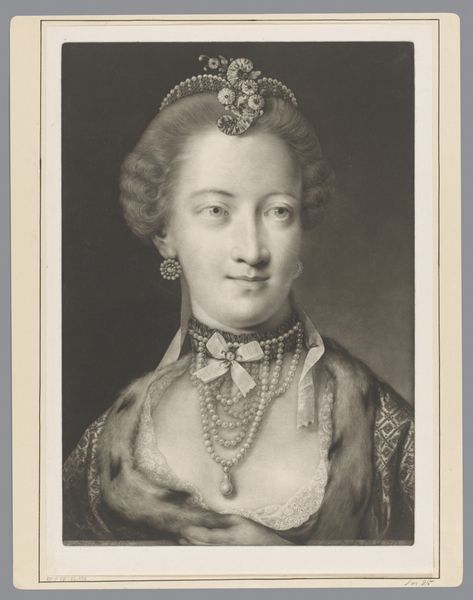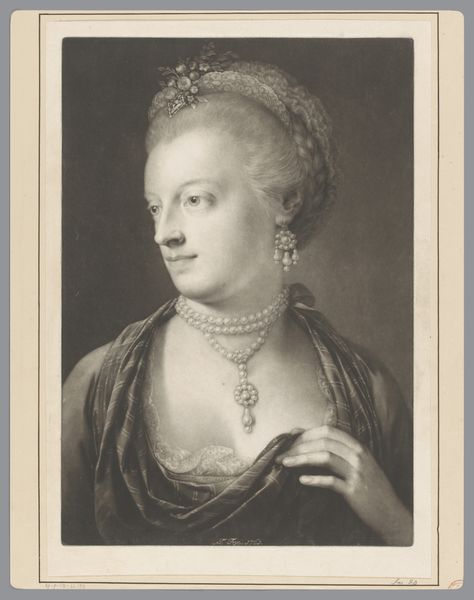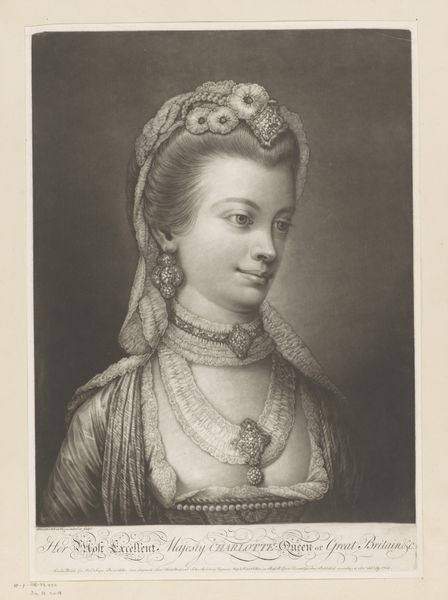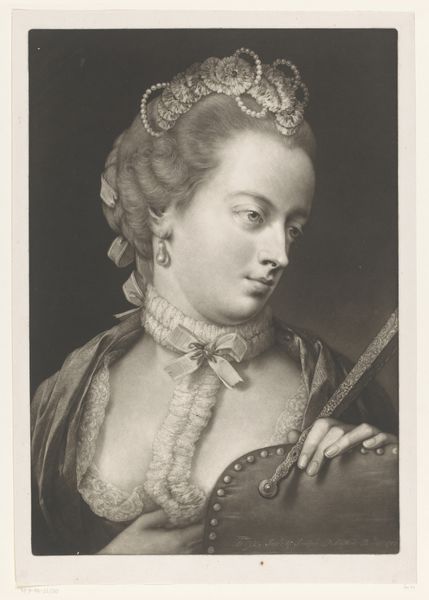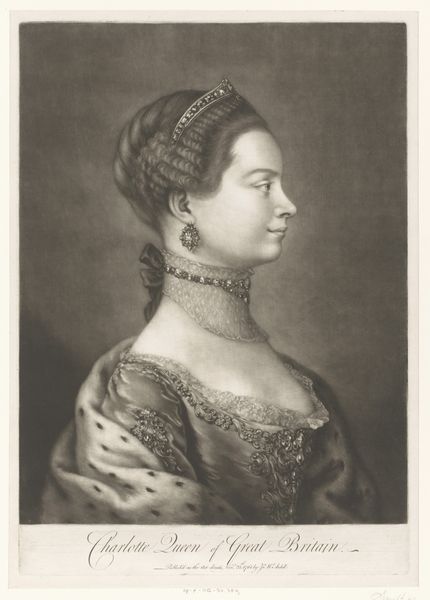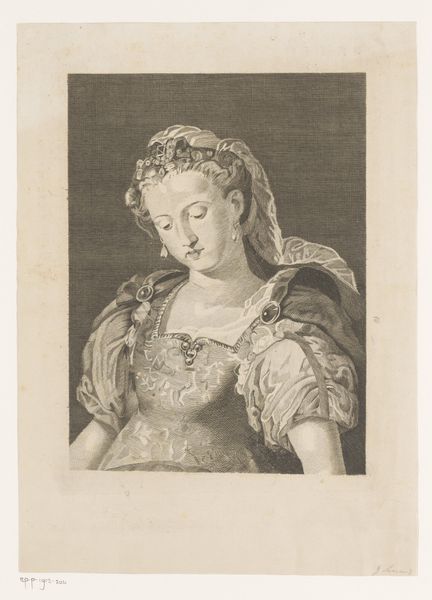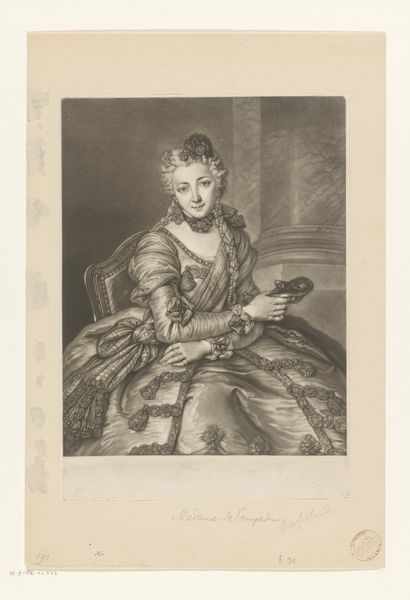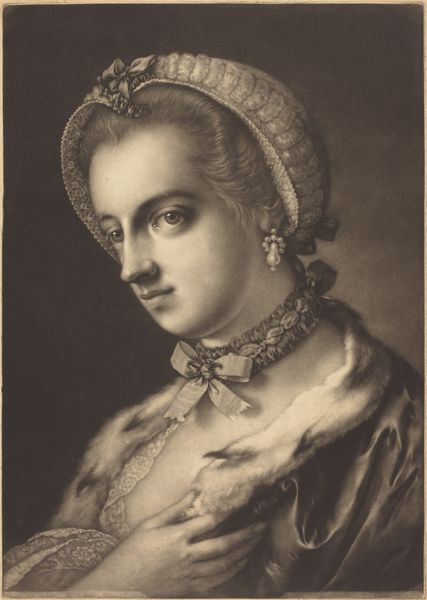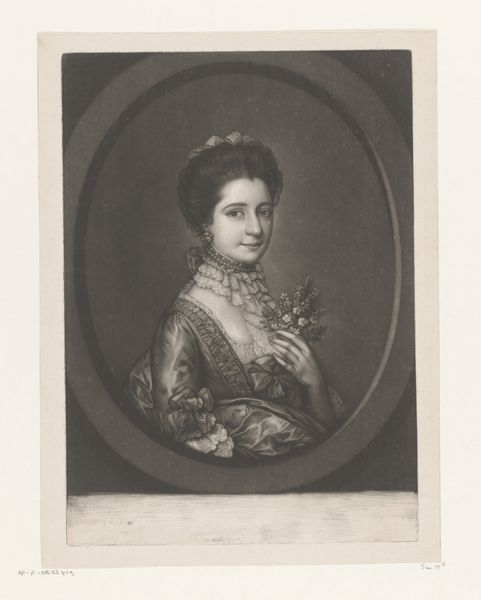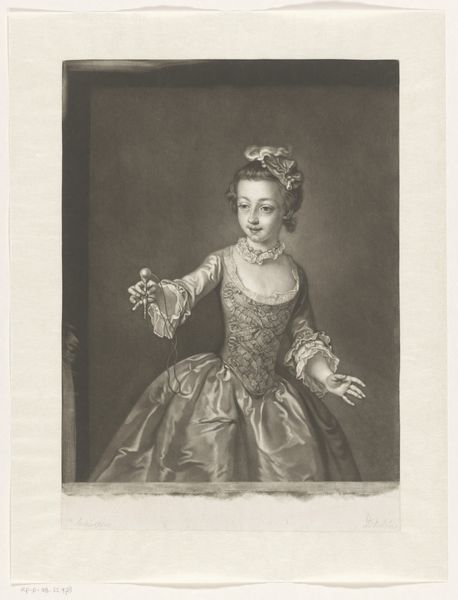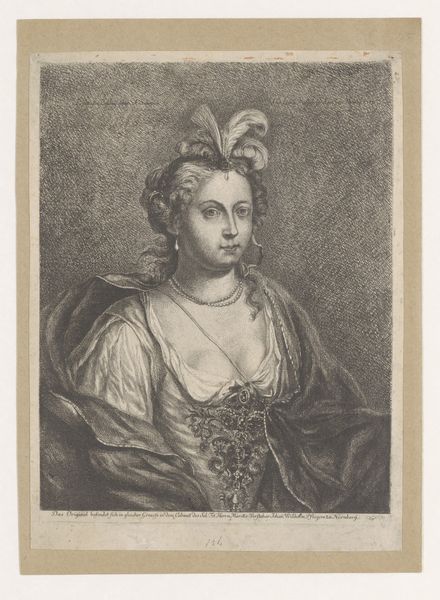
drawing
#
portrait
#
drawing
#
portrait image
#
portrait drawing
#
academic-art
#
portrait art
#
fine art portrait
#
rococo
Dimensions: height 503 mm, width 354 mm
Copyright: Rijks Museum: Open Domain
Curator: Immediately, I am drawn to the opulence, but there is something slightly subdued in her gaze, perhaps melancholy? Editor: We are looking at "Vrouw met een parelsnoer en diadeem," or "Woman with a pearl necklace and diadem," a drawing by Thomas Frye, created between 1760 and 1762. It currently resides here at the Rijksmuseum. Curator: The textures are beautifully rendered. You can almost feel the softness of the fur stole and the cool smoothness of the pearls. It is interesting how the artist focused on capturing the tactile qualities of the materials depicted, almost more than an idealized portrait. The way she is adorned is a clear sign of aristocratic class. Editor: Exactly. Consider the role of portraiture at the time, its function within society and the message this image projects about status and gender roles. This wasn't merely a picture; it was a carefully constructed image intended to circulate within a specific social and political context. Who was she? Who was it meant to impress, and why? Was it commissioned by her family? Or by her suitor? How might her position influence the way it's rendered? Curator: And that speaks to the means of production too, right? Drawings like this were not necessarily "unique" in the sense we think of art today. The scale and quality suggest it wasn't just a preparatory sketch; it may have been intended for reproduction. So, this drawing's importance lay not just in its artistry, but also in its potential as a template for printed images disseminated to a wider public. Editor: Indeed. The very act of choosing a drawing over a painting impacts the nature of accessibility. A drawing may speak to intimacy but even more important is the fact that it could then be transferred to printed media—opening up accessibility to broader, non-elite audiences through printmaking technology. This image can be mass-produced. Curator: That reframes my reading a bit. Knowing this might have circulated more widely challenges my initial impression of subdued melancholy. It’s a constructed performance meant for an audience beyond her immediate circle. Her jewelry, the cut of the clothes and overall demeanor are meant for a larger, potentially anonymous viewership who may find themselves aspiring to what she signifies. Editor: Well said. It speaks volumes about how even a single image holds layers of meaning deeply rooted in socio-economic and political power structures of its time. Curator: Precisely, thinking about her attire as a product of skilled labour allows me to reconsider this "portrait" as a historical commodity rather than solely an artistic expression. Editor: A great point to end on. By considering both materials and history, we gain so much insight into what art means.
Comments
No comments
Be the first to comment and join the conversation on the ultimate creative platform.
